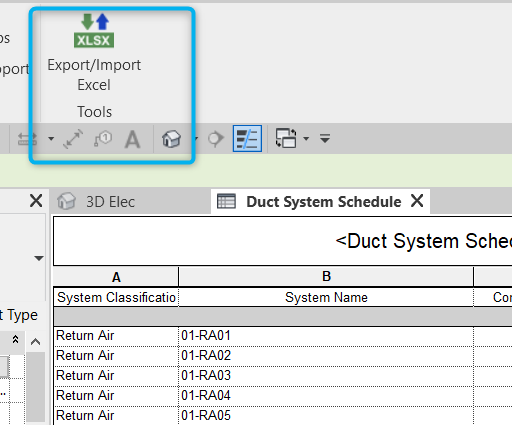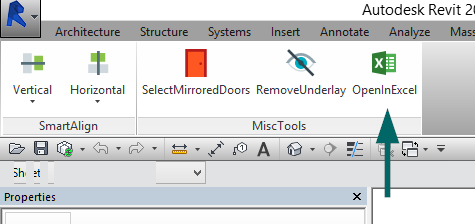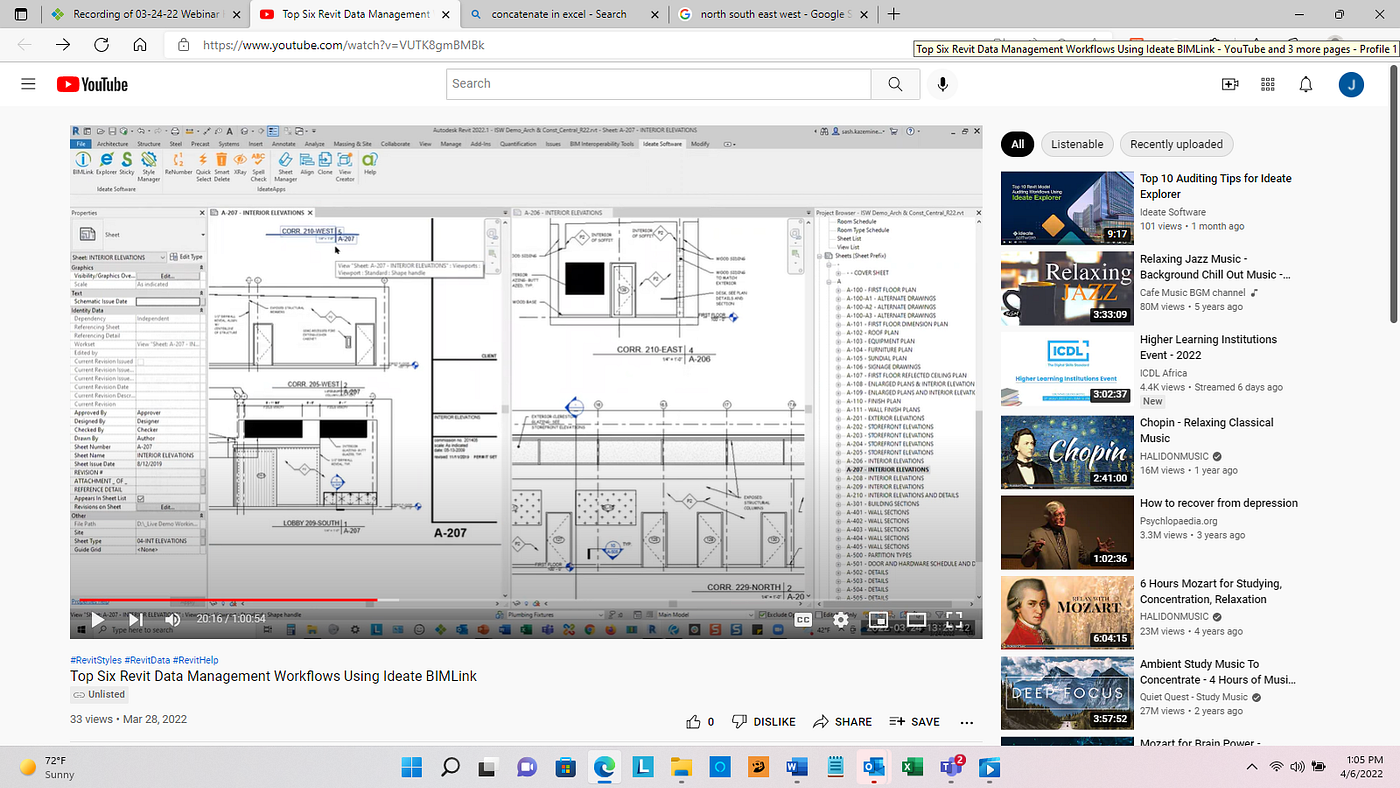Import Excel into Revit Seamlessly: A How-To Overview
Wiki Article
Breaking Barriers: Excel Importation Techniques for Advanced Revit Users
Check out various information importation approaches and master Excel assimilation to improve your Revit modeling capacities. With our tricks and pointers, you can get over importation difficulties and come to be a true specialist in using Excel for your Revit tasks.Advanced Revit Users: Leveraging Excel for Importation
You can conveniently take advantage of Excel for importation as an innovative Revit individual. Excel is a powerful tool that can substantially enhance your operations and performance in Revit. With its capability to take care of large quantities of information and carry out complicated estimations, Excel can be an important possession in handling and organizing your job details.One way to take advantage of Excel for importation is by utilizing the "Web link Excel" attribute in Revit. This feature enables you to connect an Excel spread sheet directly into your Revit job, allowing you to upgrade and integrate data in between the 2 programs. When dealing with routines or tracking adjustments in your project., this can be specifically useful.
An additional way to utilize Excel is by utilizing the "Import/Export" function in Revit. This attribute permits you to import and export information in between Revit and Excel, providing you the versatility to collaborate with information in both programs. You can import information from Excel into Revit to create elements such as doors, wall surfaces, or rooms, and you can also export information from Revit to Excel for more evaluation or coverage.

Exploring Information Importation Approaches in Revit Using Excel
Exploring exactly how to import information from Excel right into Revit offers reliable approaches for integrating information. When you import data from Excel, you can seamlessly transfer information such as area timetables, material lists, and tools data into your Revit task. This process permits you to conserve time and initiative by staying clear of hand-operated information entrance.To import data from Excel into Revit, you can make use of the "Import/Export" feature. This attribute allows you to map the Excel data fields to the corresponding Revit parameters, ensuring that the information is properly designated within the design. By selecting the appropriate import options, you can regulate exactly how the data is imported and how it connects with your project.
Another approach for importing data from Excel right into Revit is by utilizing Eager beaver. With Dynamo, you can create custom-made manuscripts that import data from Excel and adjust it within your Revit job.
Grasping Excel Assimilation for Advanced Revit Modeling
Grasping Excel integration for sophisticated Revit modeling includes making use of effective methods to effortlessly transfer data and automate jobs within your project. By using the power of Excel, you can boost your Revit modeling process and conserve valuable time. One crucial technique is importing data from Excel spread sheets directly into your Revit version. This enables you to inhabit specifications, such as area names or material amounts, effortlessly. With a few basic steps, you can map the Excel columns to the matching Revit parameters and import the data precisely.An additional helpful approach is exporting information from Revit to Excel. This allows you to extract information from your design, such as routines or product amounts, and assess it in Excel using formulas, charts, or other powerful tools. By leveraging the abilities of Excel, you can do intricate estimations, develop customized reports, and gain important insights into your job.
Along with data transfer, Excel combination can automate repeated jobs in Revit. By developing macros or manuscripts in Excel, you can automate procedures like producing views, producing sheets, or applying conventional families - import excel into revit. my website This not just conserves time yet additionally makes sure uniformity throughout your task
To grasp Excel combination in Revit, it is critical to recognize the data structure and how Revit interacts with Excel. By acquainting on your own with the offered tools and techniques, you can unlock the complete potential of Excel combination and take your Revit modeling to the following level.
Conquering Importation Obstacles: Excel Techniques for Revit Professionals
When conquering importation obstacles, it's essential to be acquainted with reliable Excel methods that can profit professionals in Revit. As an innovative Revit individual, you recognize the significance of flawlessly importing data from Excel right into your tasks.
Another beneficial technique is utilizing the "Transpose" feature in Excel. This enables you to transform data from rows to columns or vice versa. When importing information right into Revit, this can be particularly practical when you have data in a vertical style in Excel, yet you need it to be in a horizontal layout in Revit.
Furthermore, using Excel solutions such as VLOOKUP and INDEX-MATCH can greatly assist in mapping data from Excel to Revit. These formulas enable you to look for specific values in Excel and obtain equivalent information from another column. This can save you effort and time when importing huge datasets into Revit.
Excel Information Importation Idea for Advanced Revit Users
By acquainting yourself with efficient Excel suggestions and techniques, you can improve your information importation procedure as an innovative user of Revit. Excel is an effective device that can considerably assist in the importation of information right into Revit, saving you time and boosting your productivity. One valuable pointer is to make use of the "Text to Columns" visit this site function in Excel to separate data into different columns based on a delimiter. When you have data in a solitary column that needs to be divided right into numerous columns in Revit, this can be especially valuable. Additionally, using Excel's "Paste Special" function permits you to paste data from Excel right into Revit while keeping formatting, such as cell shade or font design. This can be particularly helpful when importing data that calls for details formatting in Revit. An additional handy technique is to utilize Excel's "Change and locate" feature to rapidly make changes to your information before importing it into Revit. You can conveniently replace particular text or personalities with others, conserving you the time and initiative of by hand editing and enhancing the data in Revit. By utilizing these Excel tricks and ideas, you can simplify your information importation process and become a lot more skilled being used Revit.
Conclusion
You have actually now found out beneficial strategies for importing data from Excel into Revit as an advanced individual. Go ahead, break those barriers and succeed in your Revit projects!
When importing data right into Revit, this can be specifically handy when you have data in a vertical layout in Excel, but you need it to be in a horizontal layout in Revit.
Furthermore, making use of Excel formulas such as VLOOKUP and INDEX-MATCH can significantly assist in mapping data from Excel to Revit. Additionally, making use of Excel's "Paste Special" function enables you to paste information from Excel right into Revit while keeping format, such as cell color or font style.
Report this wiki page